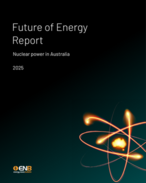This article is 19 years old. Images might not display.
Conventional coal power plants burn coal to produce heat that drives steam turbines to generate electricity, but during the conversion from one form of energy to another about 65% of the coal's energy is lost and pollution is released into the atmosphere.
"The idea was to look at a way of converting the chemical energy in coal directly into electrical energy," says Douglas Weibel, leader of the Harvard team.
Previous attempts to use coal in fuel have required electrolytes of molten carbonate, involving temperatures between 600-900C that reduced efficiency and made the fuel cells prone to corrosion.
Weibel's design allows electricity to be generated at just 100C, but with low levels of efficiency, roughly one-fifth of conventional coal-power generation.
The new cell works by adding iron ions to a slurry of coal powder mixed with an electrolyte of sulphuric acid. The ferric iron ions are reduced by the coal, causing a fuel cell reduction-oxidisation cycle that generates electricity.
Carbon dioxide is still produced by the cell, but if the efficiency can be improved above that of coal power stations then more energy can be harvested from coal resources without causing an overall increase in global carbon dioxide levels.
Weibel is currently working on design changes to increase the efficiency of the cell, trialling the use of a finer grain of coal powder and experimenting with the positioning of electrodes within the cell. He cautions that the cell is still in the infant stages of design but believes it will eventually lead to a commercial application that will be able to supply large-scale power without associated rises in greenhouse gas emissions.
EnvironmentalManagementNews.net






















